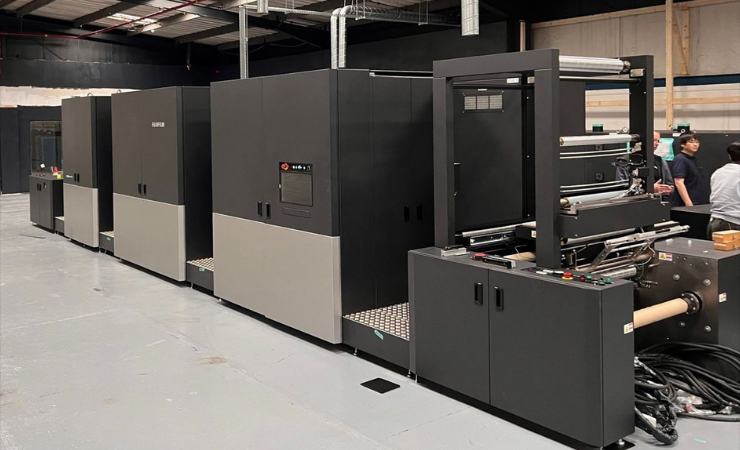Packaging and digital are to be two markets that will continue to see growth in print equipment sales over the next five years, according to the results of a new report from Smithers.
Overall, the Smithers study – The Future of Print Equipment Markets to 2028 – paints the picture of a post-Covid marketplace ‘reacting to profound changes in demand for print’. Smithers notes that it also shows stability returning to the world market for printing presses and other equipment.
When represented in numbers, this means that, at constant pricing, the annual sales of new presses, including pre- and post-press equipment, has lost $2.37 billion since 2018. Whilst sales are set to reach $16.79 billion in 2023, a decline is forecast for the coming five years with annual sales declining (down 0.5% year-on-year per annum) to reach $16.41 billion in 2028, at constant prices.
The decline is noted as being most evident in developed markets such as North America, Western Europe, Japan and Australasia, where the transition to electronic media and communication is most advanced. Press sales alone in these four markets combined will be $6.11 billion in 2028, which is down 19% when compared to 2018. Despite geographic changes in demand for print media, the US will remain the single largest market for new equipment sales, with China following, then Japan, the UK and Germany. Whilst there are high-growth opportunities for OEM sales in new markets in Asia, ‘no major changes among the top ranked countries will happen across the next five years,’ according to Smithers.
By application/end-use, Smithers has predicted that as publication and graphics printing sales drop, demand for most traditional analogue press types will follow. The greatest fall off in sales will be for litho presses. In particular, the outlook for heatset and coldset machines has been impacted by a notable drop in demand for printed magazines and newspapers, respectively. Offset litho will also lose sales volume over the forecast period, although this is partly due to installations of more high capacity very large format (VLF) presses and a contracting base of smaller B1, B2 and B3 formats. Flexo will be the only analogue print process to increase equipment sales over the next five years, Smithers suggests. This will mainly be due to its popularity in higher volume packaging and label work.
The findings of the report make better reading for digital press suppliers, with inkjet and toner-based equipment sales to increase. So much so that in 2026, new sales of such digital print systems will overtake analogue for the first time. Inkjet will account for the vast majority of this increase, as it is where large amounts of R&D spend and work is being focused. This seeing the speed and quality of inkjet improve, at the same time as demand for more customised and shorter runs will see more jobs moved over from analogue presses. In addition, multiple higher throughput inkjet presses for specific end-use segments in packaging are now seeing their first installations.
In 2028, Smithers estimates the installed base for high-end single-pass inkjet will exceed 3800, up from a projected 3048 in 2023 and 1998 in 2018. The number of operational sheet-fed inkjet presses is increasing even faster, forecast to be 3276 in 2028, which is up from 1451 in 2023 and just 385 in 2018.
From a technical perspective, improvements in automation will continue to be seen on all press types, including integration with online platforms. As supply chains evolve, print OEMs will be able to find new revenue potential in using smart software and support services, which help operators maximise press up time, resolve faults quicker and optimise on-press performance.
Also having an effect are high oil and gas prices, which have stimulated interest in more energy-efficient press equipment. These will help reduce the carbon footprint of the print segment, alongside a suite of other green technologies – improvements in set-up, aqueous inks and coatings, better substrate handling for paperboard grades, inks formulated with more bio-based ingredients, and optimisation for better deinking at end-of life.
Read issue 5 (August/September) 2023 of Digital Labels & Packaging for our annual in-depth update on inkjet’s use to produce labels and packaging; register here to receive the magazine


